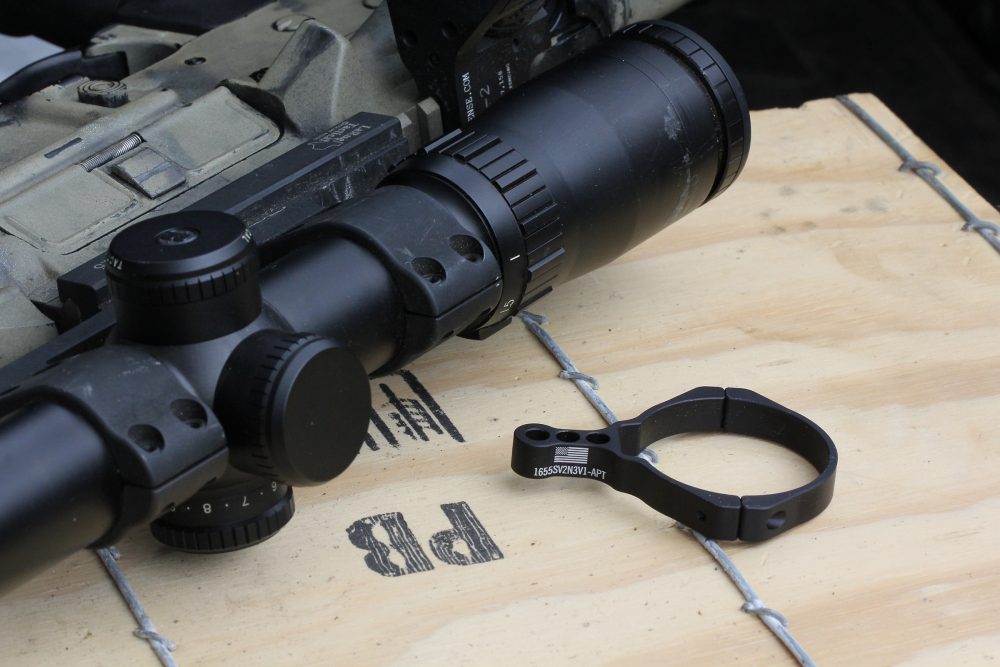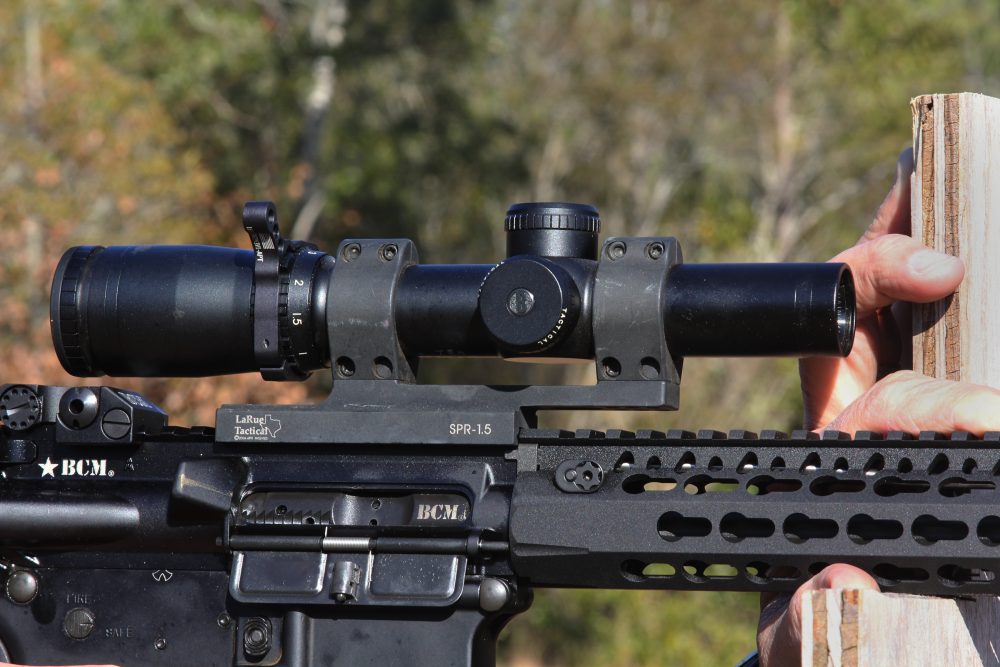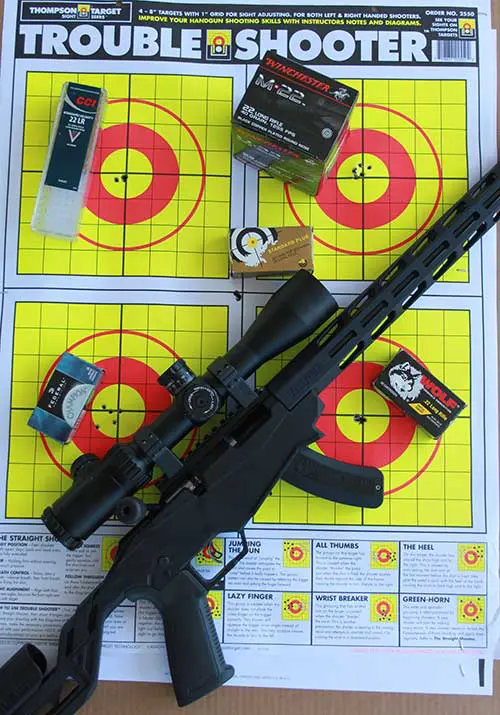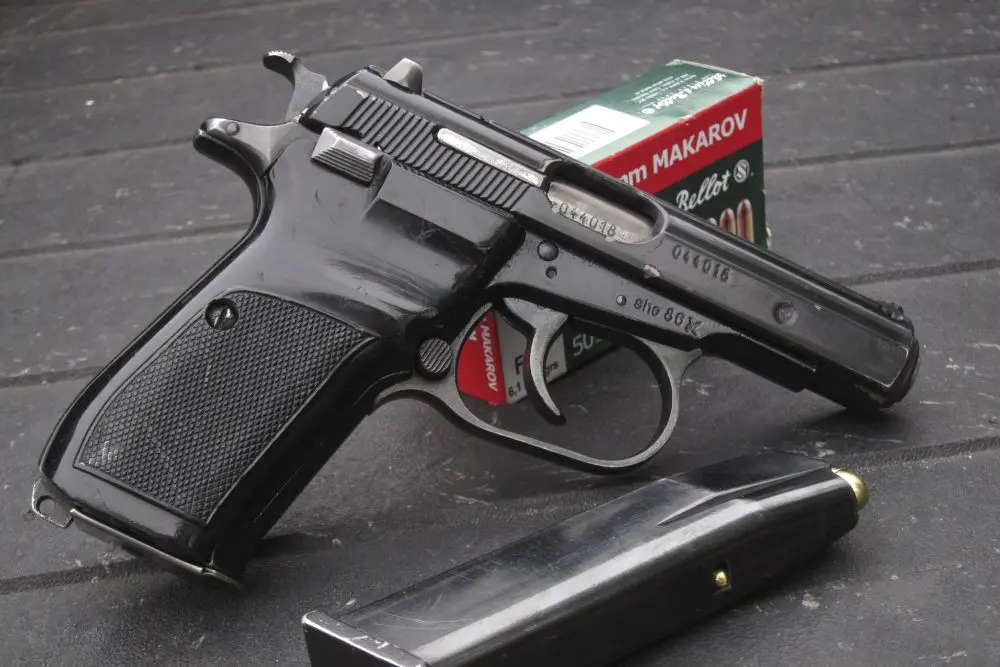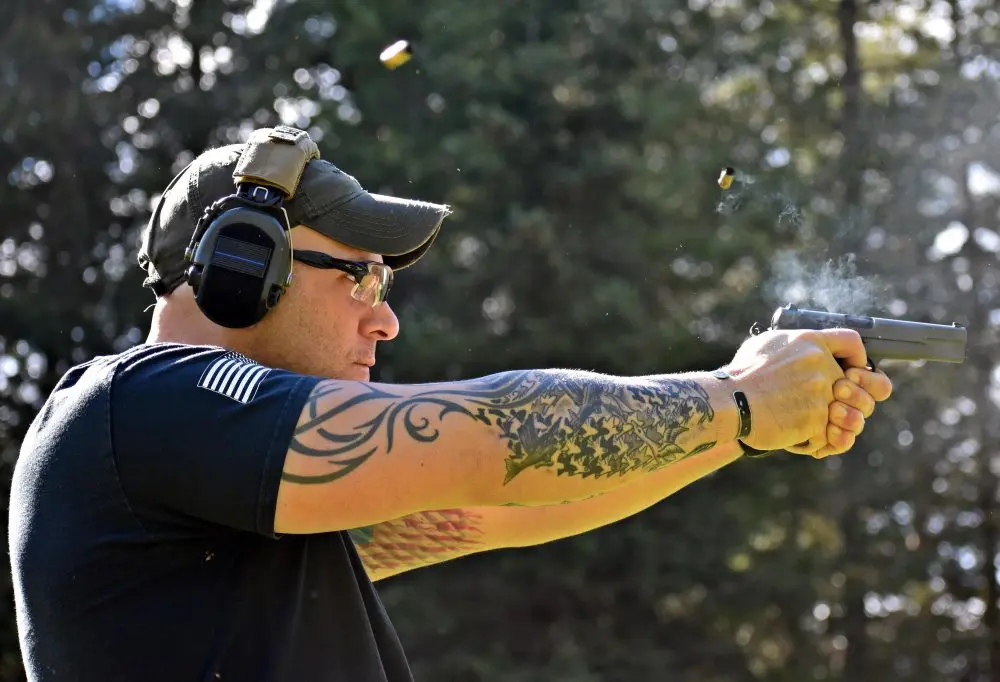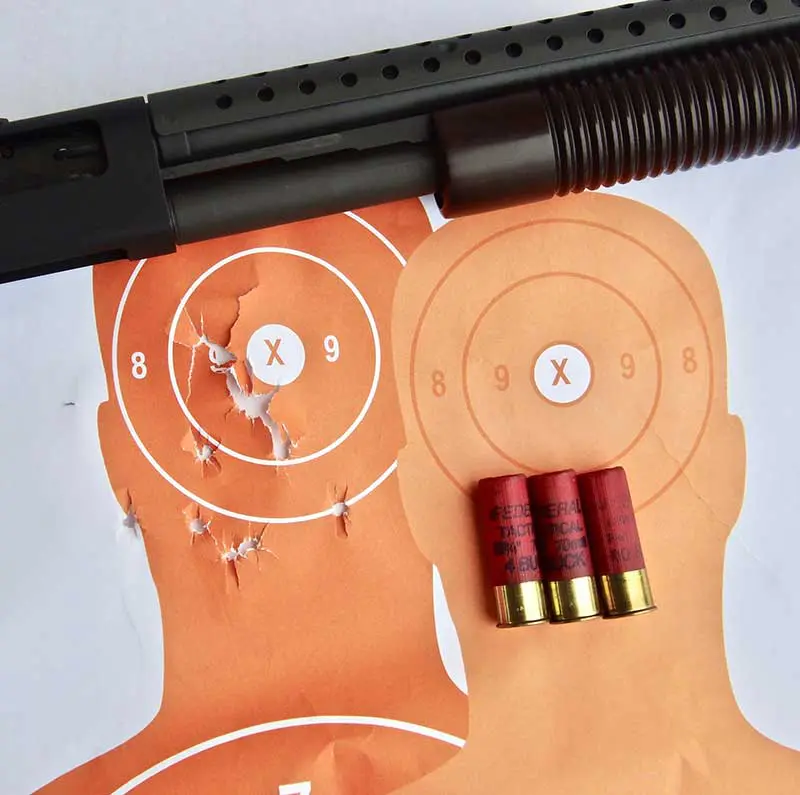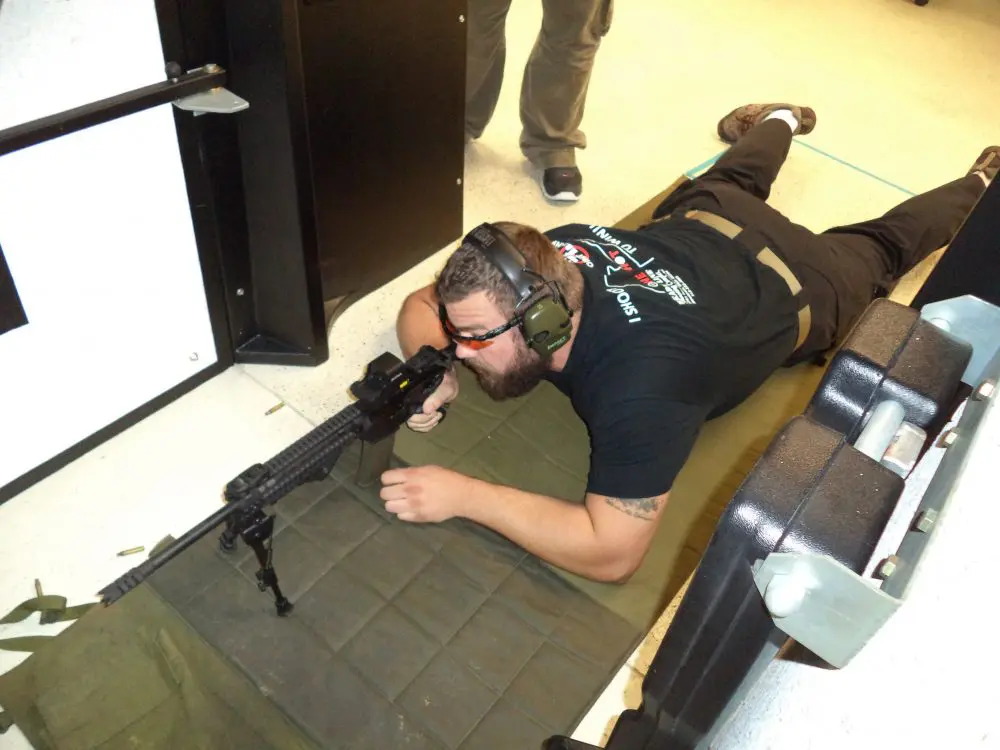Variable-power optics are gaining ground in the black rifle world. The days of the fixed-power magnified optic are largely over. The remaining inventory of military-issue fixed-power optics will persist to the end of their service life due to budgetary constraints, while individuals flock en masse to new-generation variables.
With variable-power optics, there are a couple of issues that balance out their overall utility. Chief of these is getting the scope dialed up or down to the correct power in a hurry. Every hunter and plinker is familiar with the awkward pinch and twist of the power selector ring, most of which seem stiff and not designed to be worked rapidly or vigorously. A few optics have built-in solutions to aid in the power selection, but most of the current hot tactical optics are still lacking in this department.
MGM Switchview is a custom-sized lever that attaches to a variable-power optic’s power selector ring to aid in rapidly changing magnification.
Enter the MGM Switchview lever.
It is an aluminum ring that grips the power selector and has a lever machined into it designed to give the shooter something to grab and move in a hurry. The part gives leverage to the process, and a shooter can easily add or subtract magnification with a swipe of the support hand while on the move or under stress.
I remember working with one shooter who was both a sniper and the point man, walking up front on patrols with his Mk11 7.62mm rifle with a 3.5-15X on top, habitually at high power to help him ID potential threats in the distance. His rifle lacked offset irons or a piggybacked red dot, so he was at a serious short-range liability until the optic could be cranked back down if anything happened in close.
Shooter can easily see or feel amount of magnification on the optic by Switchview’s position.
In another area, I saw a similar set-up on an M110, where the soldier had installed a Switchview on his 3.5-10X Leupold scope for those very reasons.
Aside from the obvious utility of being able to rapidly don or doff power on the optic, the lever has other advantages. One I like is that at a glance or by touch, I know exactly what power the rifle is set on. With my frequently used optics, the lever—hard over to about nine o’clock—is bottomed out at low power. That’s where mine lives until the shot dictates more magnification.
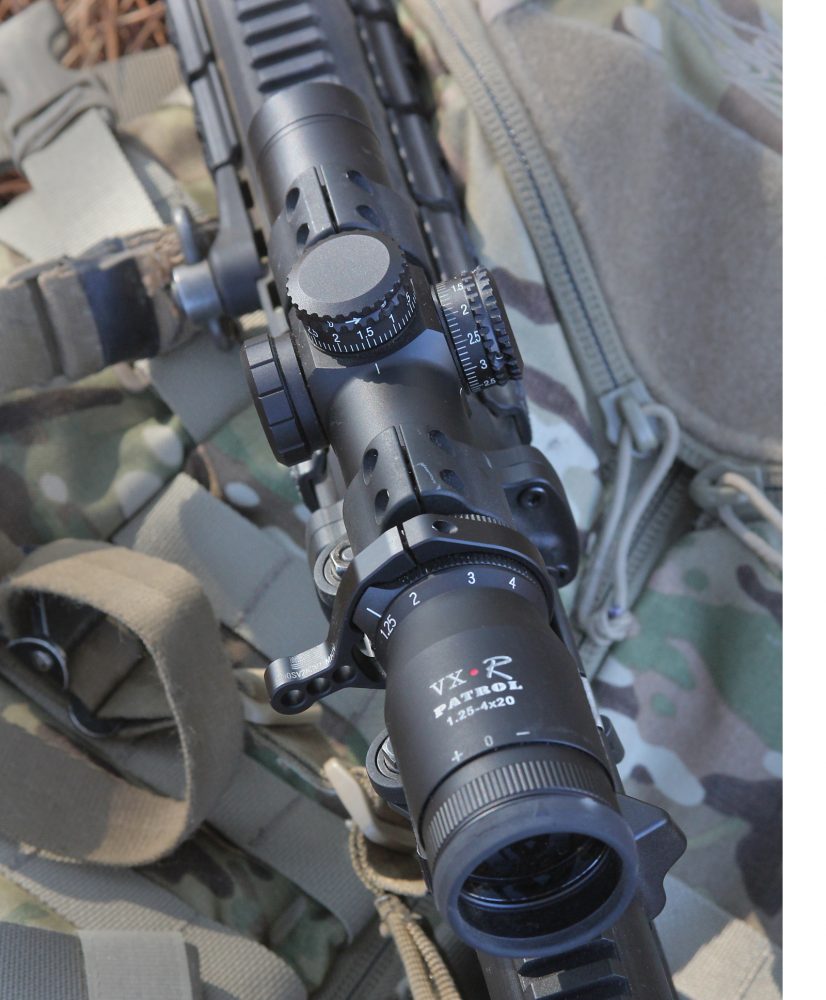
With a second focal plane scope where the mils or bullet drop holdovers are only “good” at full power, the Switchview allows the shooter to run the lever all the way over until it stops easily and with certainty by feel. Sure, the power selector ring can be felt as it stops as well in the pinch-and-turn manner, but not at the speed and certainty on the move, or distracted while looking downrange or for cover as with the Switchview.
As a warm-weather Southern boy with most of my overseas trips to jungles and deserts, I sometimes forget about cold weather. Someone pointed out to me that the MGM lever is very well suited to cold-weather employment. Wearing heavy gloves and trying to crank the optic up can be a slow and deliberate process that probably leads to bypassing that in a hurry and running the power as is. The Switchview is tailor-made for this scenario and allows the shooter to swipe the power in the right direction.
One concern that could be pointed toward the lever is that it presents a snag hazard. That could be, but I haven’t found it a problem so far. More likely in patrolling mode is that the lever could rub on the plate carrier or other gear and apply some magnification inadvertently. That is a trade-off the user would have to watch for and occasionally check the position of the lever. Enough resistance exists in most optics that this isn’t a huge concern compared to the utility provided.
In using the Switchview, I’ve found that rather than simply slapping the lever, the smoothest and fastest technique is to apply pressure to the lever with the support hand while twisting the firing hand wrist inboard or outboard as appropriate to use the rifle’s pistol grip as an even larger lever.
The lever is sized specifically to most common optics, with over 16 models to choose from and dozens of tactical optics listed.
The Switchview is not a revolutionary game changer. It is a good piece of kit that helps the shooter get the most out of a variable-power optic and makes running the gun that much smoother. Ounces make pounds, and every little tweak that helps the good guy is useful.
SOURCE:
Mike Gibson Manufacturing
(888) 767-7371
www.mgmtargets.com
